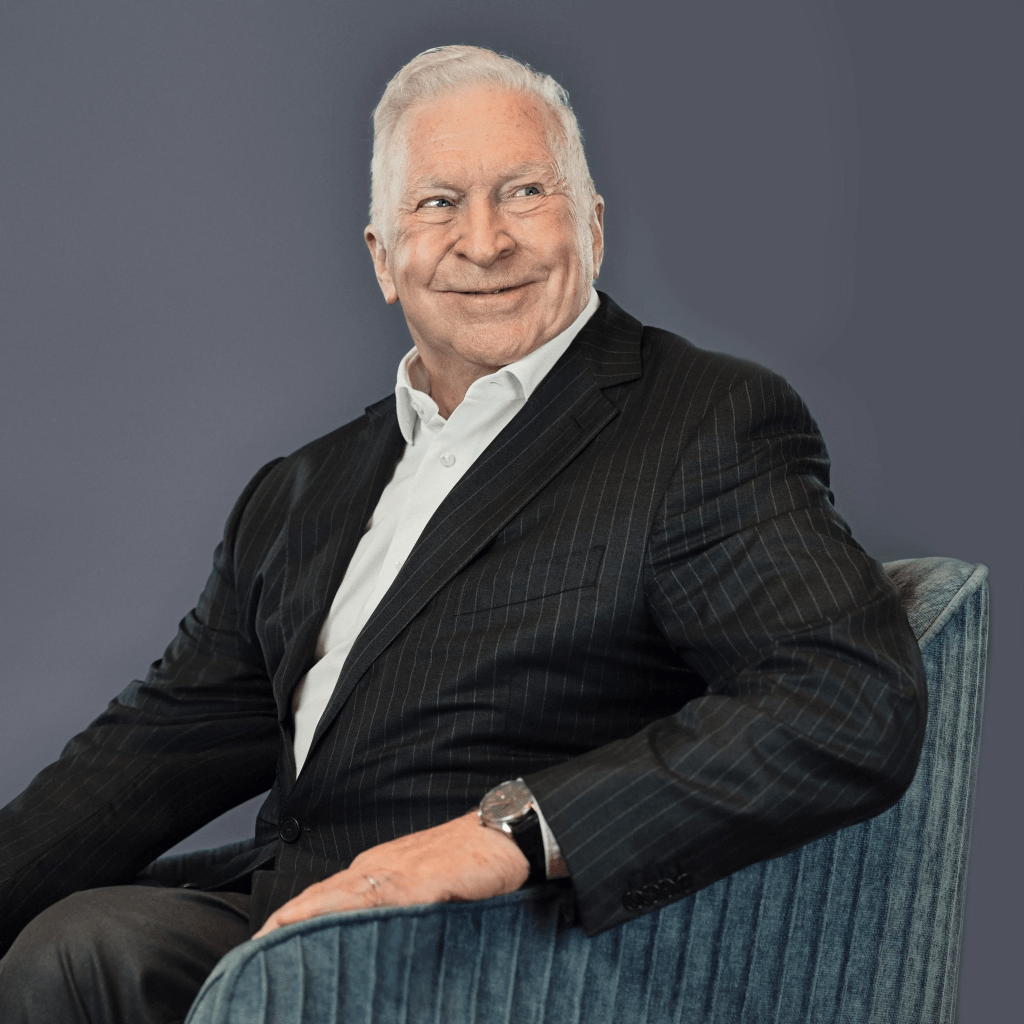By bringing together top doctors, scientists and engineers, Terry Ragon believes he can succeed where major governments have failed and cure one of the world’s wiliest viruses.

It’s opening day at the Ragon Institute’s new building, a sparkling 323,000-square-foot glass-and-steel edifice on Main Street in Cambridge, Massachusetts. Governor Maura Healey, New England Patriots owner Robert Kraft and presidents past and present of MIT, Harvard and Mass General Brigham are sipping lemon spritzers and nibbling hors d’oeuvres. A choir of a dozen scientists and staffers starts singing “Somewhere Over the Rainbow.” Everyone is here to toast Phillip “Terry” Ragon, the billionaire founder of software company InterSystems, and his wife, Susan, also an executive at the firm.
The Ragons have donated $400 million for research to harness the immune system to fight disease. Soon, instead of singing, these same scientists will be running experiments on gleaming white-and-silver lab benches in a bid to cure one of the world’s most elusive viruses: HIV.
“We started to evolve this whole idea of a Manhattan Project on HIV,” says Ragon, 74, in a rare interview, referring to America’s massive R&D program to build the first atomic bomb during the Second World War.
“If you tried to do the Manhattan Project back during World War I, you would have failed because we didn’t know about quantum mechanics. If you waited until World War III, you’d have been too late.”

Ragon, who is the sole owner of InterSystems and is worth an estimated $3.1 billion, believes—despite all good evidence to the contrary—that we are on the cusp of a similar scientific breakthrough when it comes to curing the estimated 39 million people worldwide living with HIV, the virus that causes AIDS.
It’s a bit crazy. After all, huge organizations with vastly more resources than the Ragon Institute have spent decades trying to develop an HIV vaccine. After years of trials and a $500 million pledge, Johnson & Johnson pulled the plug on its last large-scale trial in 2023, a vaccine based in part on Ragon Institute research. In total, governments, nonprofits and companies have spent about $17 billion on HIV vaccine development over the past two decades, per HIV nonprofit AVAC.
Not a single one has made it beyond Phase 3 clinical trials. Ragon, however, is not deterred. He says government funders typically evaluate research proposals not just upon their importance but also on the likelihood of the experiment working out.
That never made sense to him. “You would expect most experiments to fail,” he says, which is why he believes his efforts, focused on funding riskier, earlier-stage research, will succeed where bigger players have fallen short.

Home to Harvard, MIT and the newly built Ragon Institute (above), Cambridge, Massachusetts, has the world’s highest density of research talent, Terry Ragon says: “People talk about Silicon Valley, but it’s not like Cambridge.”
Jeremiah Jordan/DGA Productions
The need is dire. In wealthy countries, HIV and AIDS have been largely contained by expensive drugs, but the disease still killed some 630,000 people in 2022, mostly in sub-Saharan Africa and Southeast Asia. United Nations research estimates ending the epidemic could generate economic benefits of $33 billion per year in lower-income countries through 2030.
The CDC says about 1.2 million Americans are HIV positive; the lifetime cost of treating each person is around $420,000, per a 2021 study.
Ragon’s approach has been to bring together scientists who don’t typically collaborate, including doctors, engineers, physicists, mathematicians and virologists. The goal is to reengineer people’s immune systems to cure them, which could have far-reaching implications for other diseases, such as tuberculosis, malaria and cancer.
“I’ve learned more from my failures than I have from my successes,” Ragon says. “And I think that’s true in science, too.”
Indeed, Ragon’s now decades-long business success was the result of failure in a different realm: music. After graduating from MIT with a degree in physics in 1972, Ragon packed up his guitar and moved to London—his British rock idols included Led Zeppelin, Jeff Beck and Cream—to pursue rock stardom. It didn’t work out.
Returning to Boston desperate for a paying job, he noticed that want ads were filled with openings for computer programmers. After several failed interviews, he was in the running for a role at Meditech, an early electronic medical records company.
“I really don’t know much about computers,” Ragon recalls telling the interviewer, looking up to see a poster of Mick Jagger. “But I play guitar.” He got the job, which turned out to be a crash course in an early programming language known as the Massachusetts General Hospital Utility Multi-Programming System, or MUMPS.
After a year and a half, Ragon quit Meditech to cofound a MUMPS-based medical billing company. In 1978, he started Interpretive Data Services, which he would later rename InterSystems.
While other database management companies like Oracle and SAP offered businesses a way to structure transactions into neat rows and columns, Ragon took a gamble on a different type of database, coded in MUMPS and organized like tree branches linking back to central trunks.
It was fast and reliable, and soon adopted by the Department of Veterans Affairs for medical records. InterSystems grew slowly: It took 24 years to get to $100 million in revenue—driven by its two largest customers, the VA and the electronic health records company Epic Systems—and another 21 years to get to $1 billion by 2023.
Ragon remains optimistic about the possibility of an HIV cure in his lifetime in part because he has taken a similarly methodical and long-term approach to building his software business.
He draws inspiration from the philosopher Thomas Kuhn, who famously argued that science progresses through long periods of slow evolution punctuated by radical revolutions, which Kuhn called paradigm shifts. “Every once in a while,” Ragon says, “there’s something that just turns the world upside down.”
His own personal paradigm shift occurred during a visit to a hospital in South Africa at the invitation of Bruce Walker, an infectious disease researcher at Mass General and a professor at Harvard Medical School. It was 2007. InterSystems had just acquired an electronic health records company called TrakHealth, and Walker wanted to show Ragon the software in action.
He recalls a frail young woman entering the exam room and the doctor pointing to a throbbing vein in her neck, an indication of heart failure. “I’m sitting there watching her die,” Ragon says, as he heard the doctor ask if she believed in Jesus.
“This would be a good time to make your plans to meet your maker,” he remembers the doctor saying before discharging her to the street. Four thousand women ages 15 to 24 become infected with HIV each week, the U.N. estimates—3,100 of them in sub-Saharan Africa. Ragon knew he had to do something.
When HIV enters the body, it hijacks our cellular machinery to pump out new copies of the virus. Unlike Covid or measles, HIV inserts instructions directly into the DNA code, meaning the human host will be forced to keep making copies of the virus as long as they are alive.
It is also “extraordinarily variable,” says Daniel Kuritzkes, chief of the infectious disease division at Brigham and Women’s Hospital in Boston, meaning “each person has a virus that’s slightly different from [that of] another person.” The combination of these two properties makes it extremely difficult to develop an effective vaccine.
To conquer one of nature’s toughest viruses, researchers at the Ragon Institute are drawing inspiration from an amazing and rare natural phenomenon: people who have HIV but don’t have symptoms and essentially can’t spread the virus.
Known as “elite controllers,” their T-cells are extremely effective at attacking and killing the virus. Walker, who became the founding director of the Ragon Institute, first encountered an elite controller in the 1990s, and he has been trying to unlock the secrets of such patients’ immune systems ever since. “If we could achieve that state in people who are infected,” Walker says, you would have a “functional cure.”
In 2025, Walker expects to start Phase 1 clinical trials of a new T-cell-based vaccine that attempts to mimic a phenomenon in elite controllers in which the body attacks amino acids critical to the structure of the virus.
Partners on the project include the Gates Foundation, the International AIDS Vaccine Initiative and the Italian drug developer ReiThera. Will it work? “We have been wrong so many times, and we may be wrong here as well,” Walker says.
Fifteen years ago “roughly half the scientists said that a vaccine is impossible,” Ragon says. Will there be an HIV cure in his lifetime? He doesn’t miss a beat: “Yes.”


